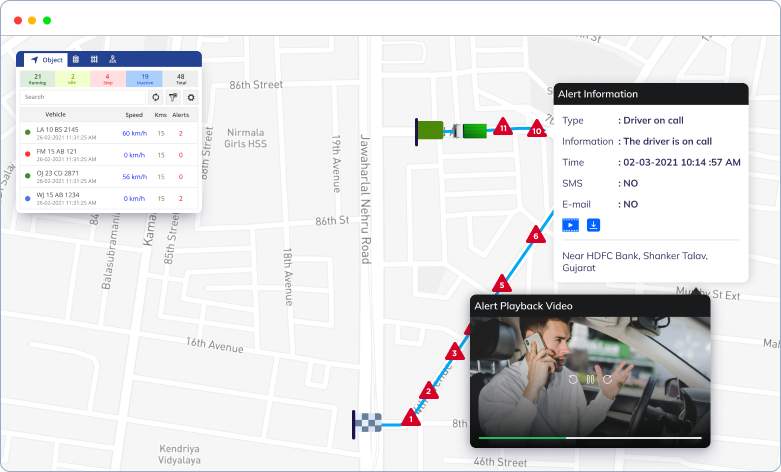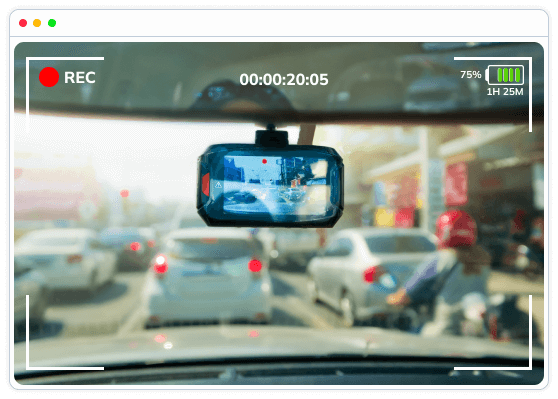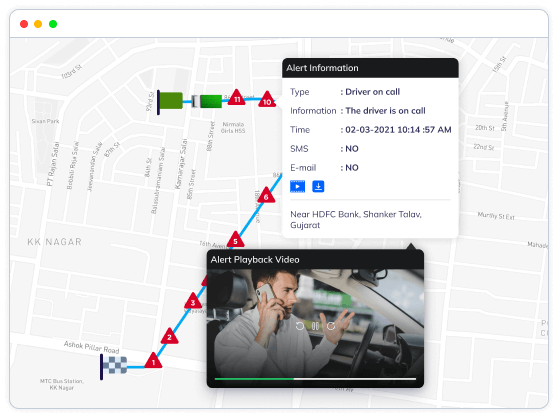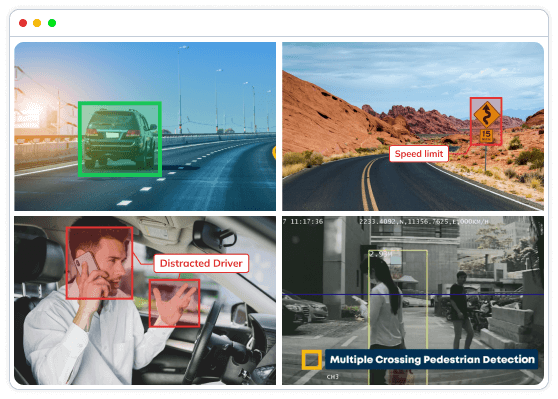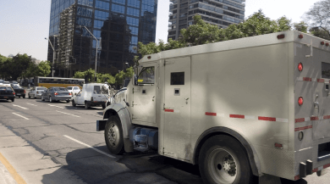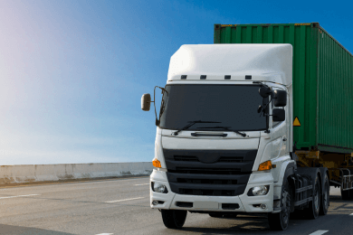Get real-time visibility into fleet operations with live video streaming. Eventually our software makes it simple to live-stream video from various camera devices. Moreover, up to 8 camera channels can be streamed simultaneously.
Additionally, audio streaming in real-time is also available in addition to live streaming. With improved and quick visibility, fleet owners can also zoom in on driving habits, or events that led to an accident. Furthermore, get access to real-time footage on mobile devices or desktop computers.

